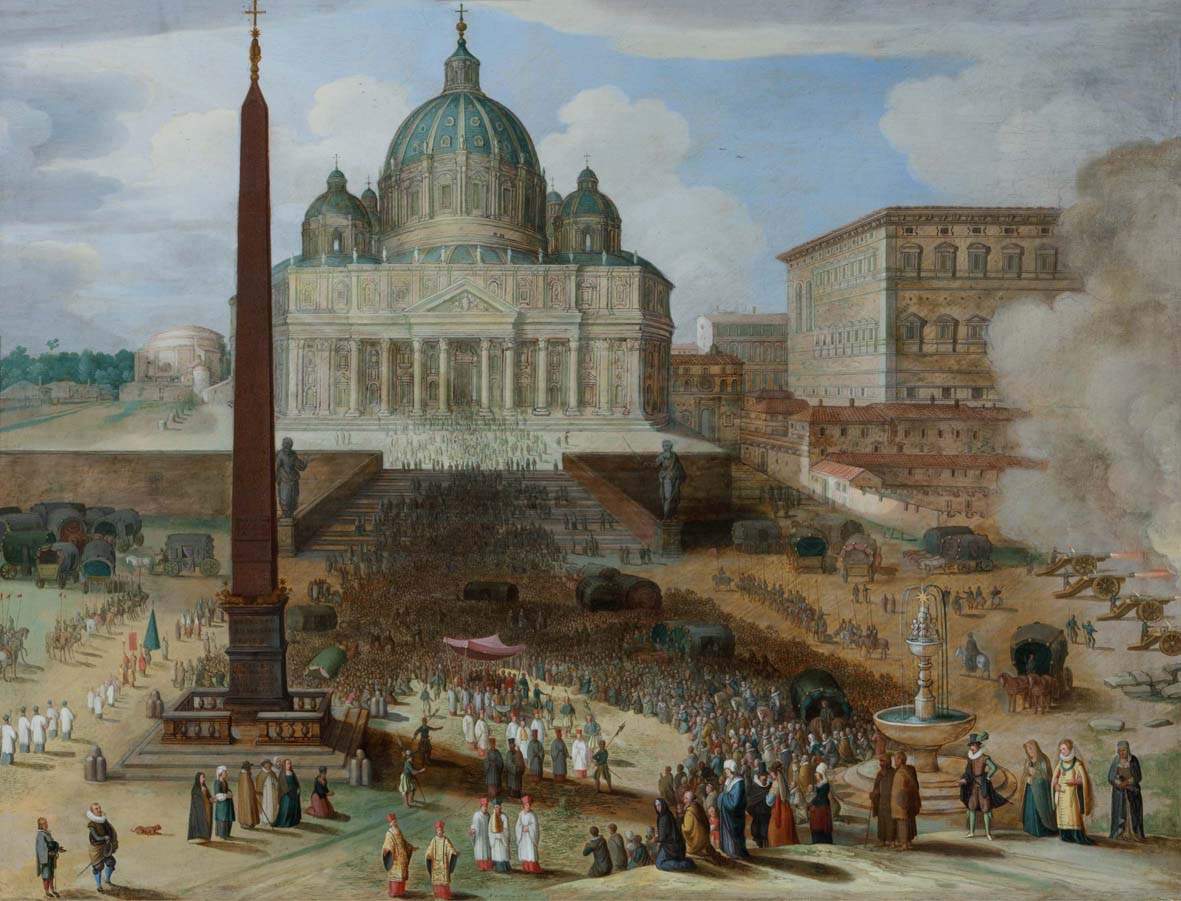From Nov. 27, 2022 to Feb. 19, 2023, the Pinacoteca Giovanni Züst in Rancate (Mendrisio, Canton Ticino, Switzerland) is hosting an exhibition dedicated to one of the greatest architects of the 16th century, Domenico Fontana (Melide, 1543 - Naples, 1607), entitled The "Inventions of Many Works. Domenico Fontana and his building sites. Domenico Fontana, originally from Ticino but long active in Rome and Naples, is usually associated with the memory of that “water on the ropes” which, legend has it, enabled the architect to raise the obelisk in St. Peter’s Square. A colorful episode to give an account of the admiration experienced by contemporaries in witnessing this event, a participant in the closing decades of the 16th century in the grandiose rearrangement of Rome desired by Pope Sixtus V (1585-1590) to make it a modern city worthy of its function as the heart of Catholicism.
Fontana is now the protagonist of an original exhibition promoted by the Pinacoteca Cantonale Giovanni Züst in Rancate and the Archivio del Moderno of the Università della Svizzera italiana, in partnership with the Vatican Museums, and under the patronage of the Biblioteca Apostolica Vaticana, curated by Nicola Navone, Letizia Tedeschi (Università della Svizzera italiana-Archivio del Moderno) and Patrizia Tosini (Università Roma Tre).
The exhibition presents the career and works of architect Domenico Fontana, highlighting his dialogue with the many artists who collaborated on the large construction sites he designed and directed, between Rome, Naples, Amalfi and Salerno. In his most prestigious factories, commissioned by popes and royalty, the work of masons, glaziers, tinkers and blacksmiths is superimposed on the work of the artistic workshops of painters, sculptors, bronze workers, plasterers, gilders and engravers. One thus gets to experience, in the exhibition, the experience of the great artistic workshops of papal Rome at the end of the 16th century through the presence of relevant works of art by painters such as Cavalier D’Arpino, Cesare Nebbia, Giovanni Guerra, Paul Bril, Andrea Lilio, and Ferraù Fenzoni, bronze and marble sculptors such as Bastiano Torrigiani, Lodovico Del Duca, and Leonardo Sormani, and medallists such as Domenico Poggini.
The exhibition, divided into three main sections, divided within them into thematic subsections, wants to talk about this extraordinary chorality that unites the most diverse skills. Digital reproductions, immersive photographs and multimedia reconstructions accompany the works, creating a rich and multifaceted digital apparatus that integrates and enriches the narrative, interacting directly with the visitor.
The exhibition illustrates the results of the research project, funded by the Swiss National Science Foundation (SNSF), The Fontana enterprise between the 16th and 17th centuries: modes of operation, techniques and the role of the workers,“ and is held as part of the SNSF-Agorà project The ”invention of many works." Domenico Fontana (1543-1607) and his buildings works (CRAGP1_199500, 2022-2024), aimed at fostering dialogue between the scientific community and civil society.
Domenico Fontana was born in Melide in what is now Canton Ticino (Switzerland) in 1543. He made his debut as a plasterer in Rome starting in 1563, where he intervened in the construction sites of Cardinal Ricci (the present Palazzo Sacchetti and Villa Medici), in the Campidoglio Palace and in the Chiesa Nuova in Santa Maria in Vallicella. He is also attested at Villa d’Este in Tivoli in 1568. In 1584 he built the Sistine Chapel in Santa Maria Maggiore for Cardinal Felice Peretti, the future Pope Sixtus V, who would become his main patron. The new chapel incorporated Arnolfo di Cambio’s 13th-century Chapel of the Nativity: the small shrine was transported inside the building using complex construction machinery. For the same patron he built the grandiose Villa Montalto alle Terme. With Felice Peretti’s accession to the throne of St. Peter,Fontana , received prestigious commissions: he built the Lateran complex that replaced the ancient Patriarchate, with the Palace, the Loggia of Blessings and the Holy Staircase building, the Apostolic Palace and the Vatican Apostolic Library. He is still famous today for raising the obelisk in St. Peter’s Square, an undertaking of which he published an account in his book Della transportatione dell’obelisco Vaticano e delle fabriche di Sisto V, published in Rome in 1590. He also carried out the erection of three other ancient obelisks in today’s Piazza del Popolo (Obelisco Flaminio), Piazza Santa Maria Maggiore (Obelisco Esquilino) and Piazza San Giovanni in Laterano (Obelisco Lateranense). He obtained from the pope the title of knight of the Order of the Golden Spur.
When Sixtus V died, the architect, accused of embezzlement, was forced to move in 1592 to Naples, where he served the Spanish viceroys, who were engaged in major works for the kingdom’s new and second capital. He made plans for the port of Naples and was in charge of the design of the Royal Palace, the construction of which was begun in 1600. He died in Naples in 1607 and was buried in the church of Sant’Anna dei Lombardi. Following the church’s collapse in 1805, the body was moved to the vestibule of the Church of Monteoliveto where the Archconfraternity of Lombardi moved.
Image: Willem van Nieulandt, View of St. Peter’s Square in Rome (1612; private collection)
 |
| An exhibition in Switzerland dedicated to Domenico Fontana, a great 16th century architect |
Warning: the translation into English of the original Italian article was created using automatic tools. We undertake to review all articles, but we do not guarantee the total absence of inaccuracies in the translation due to the program. You can find the original by clicking on the ITA button. If you find any mistake,please contact us.